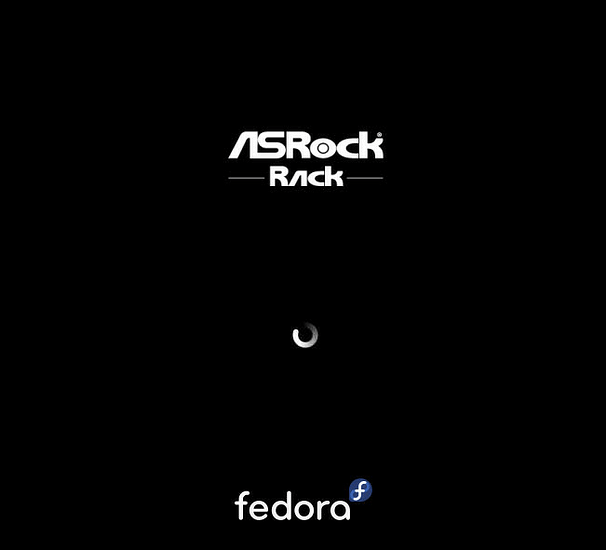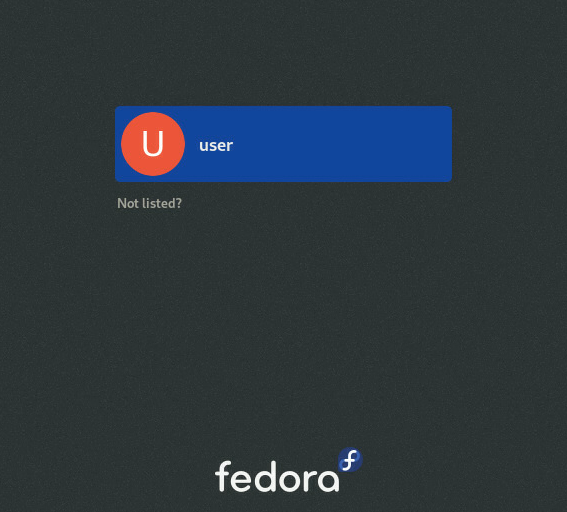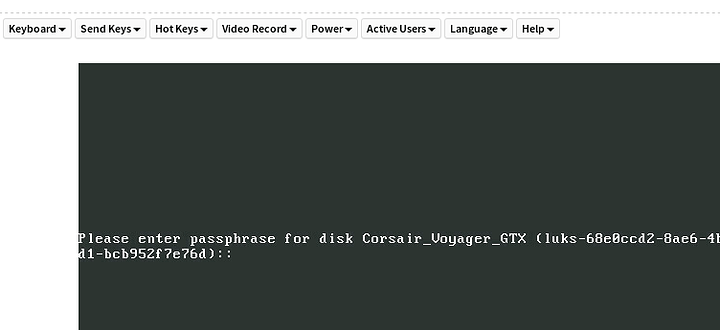Both: At first I used the downloadable ISO and used the latest version of “Rufus” on Windows to make bootable USB thumb drives with it - after it didn’t work I used the Fedora Media Write tool that sets up Fedora on a selected storage device in Windows to take it to another system to boot.
Is the X470D4U maybe sensitive to being verbally abused?
If so I might just put it to sleep since therapy would take to long at this point 
Can you try a few power cycles with periods where the motherboard is completely separated from power?
sure… how long do you want me to power it down and have the disconnected from the PSU?
Just 5 to 10 min, I’m curious now if you can - with an completely constant setup without any changes - boot regularly or if maybe RDRAND is by chance delivering something that “sometimes” works instead of completely stopping an OS service.
am I booting the fedora 30 iso …or my currently running OS drive?
The Live system is the best indicator according to @wendell - I’m just repeating his advice on that end since I’m mainly interested in ESXi.
(I don’t know if you’re allowed to share the VMware ISO even without any licence keys)
Wouldn’t this point to a problem with the CMOS battery too?
Maybe the initial response from ASRock Rack was actually true that BIOSes starting with 3.10 already have AGESA 1003 ABB and these bugs are just caused by bugs in the BMC firmware/BIOS. That would be HILARIOUS 
Is there a way to contact the product manager for this specific motherboard model without going through the end-customer support route that googles its responses in this thread?
just powered off… and unplugged the PSU… cmos battery still in.
Im going to use virt-manager to install fresh F30 onto a USB drive… to see if i boots…
if not… i’ll (bring it back to virt-manager) install updates and try again.
If first try doesnt work… then I bet the updates do.

been almost 10 mins… hooking PSU up and powering on by jumping MB header pins…
edit…
@aBav.Normie-Pleb
booted just fine into the OS.
Well, again honestly no idea how your unit works now (you said you didn’t change anything compared to when you saw the exact same errors as me in your posting #478)
Is there absolutely no way to check the exact AGESA sub-version from within Windows, for example? 
The only thing I can see is 1.0.0.3 without the letters even on the X570 Taichi where you know that it surely has 1003 ABBA)
Not 100% following this thread but the installer has the version of systemd that needs rdrand.
If you install then update fedora in another system it’ll work even with a broken rdrand so diagnostically that doesn’t tell you anything? Hence why the installer is the best thing to check? (Unless the installer also got a hotfix which is unclear to me)
Short version, X470D4U + 3700X:
- ESXi 6.7 U3 crashes with random numbers generator hw error message
- Fedora 30 Live image doesn’t boot
Impression: BIOS doesn’t have the AGESA 1003 ABB fix even though ASRock Rack support said that BIOS is to have AGESA 1003 ABB.
Now I’m not so sure what to believe since @nx2l seems to be able to just boot Fedora 30, for example (I can boot the same storage devices on an X570 Taichi/3700X with ABBA without any issues).
Question: Is there any way to really find out the exact AGESA version without manufacturer support so we might have something concrete to obsess over?
I agree that the AGESA version isn’t in BIOS 3.20
Am I interpreting that right then that there has been a Whoopsie meaning updated Fedora 30 installations were the ones that booted on your motherboard and the vanilla ISO one is the one where you got the same error messages as me?
if this usb drive that I just installed f30 onto (then updated) boots… then there must have been a systemd or firmware patch in fedora that stopped its dependence on the rng.
yep
and now it makes it far enough into the boot process to prompt for a crypt password
Hi all,
I’ve recently bought the X470D4U2-2T for a FreeNAS build.
I’ve posted my first experiences with this board at the FreeNAS forum (search for “FreeNAS build with 10gbe and ryzen” on ixsystems. com)
But since this forum seems very active regarding this board and since many people are strugling, I thought it could be useful here as well:
For those having trouble with a similar built, here is how I “kinda” did it…
Please keep in mind that I didn’t log everything I did, so this is from memory and perhaps I’m forgetting something…
So, this is my first built with IPMI. I didn’t install a graphics card, but I was hoping it would work with just a network to the IPMI (and it did  )
)
- I installed all hardware except the HBA / HDDs in the case
- I attached a monitor to the D-Sub connector of the mobo (I think this is of the IPMI?)
- I attached a USB keyboard / mouse
- I attached a networkcable between the IPMI NIC and the router
- In my router-admin-page I found the IP that DHCP of the router assigned to the IPMI
- I browsed to the IPMI web page and logged in with the default credentials (admin / admin)
- I configured both router and IPMI to use a static IP and changed the admin password
- I updated the IPMI to v1.40.00 using ‘maintenance’ - ‘firmware update’ in the IPMI
- I update the BIOS to v3.20 using ‘maintenance’ - ‘BIOS Update’ in the IPMI
- I think I used the ‘Instant Flash’ download for this
- Yes, this worked, even though my CPU wasn’t supported by the older BIOS that was installed
- No, this isn’t properly documented anywhere that I could find
- I tried opening ‘Remote Control’ and booting, but didn’t get any visual and many beeps / error codes
- In the end, I think unplugging both the monitor and USB keyboard / mouse, allowed me to finally boot and get an visual in ‘Remote Control’
- At one point I also tried disabling ‘Onboard Graphics’ in the BIOS (to save some power usage), but that also caused it to no longer boot. Will try fine tuning the BIOS a bit more later…
- Then I installed the HBA / HDDs
- The HDDs support the enterprise feature PWDIS (Power Disable). The PSU does not support this. So none of the HDDs would power up.
- I fixed this by disconnecting the 3.3v from the modular SATA power cable on the PSU side, using the below method:
(link was here, see my post ixsystems if you need the link) - For 1 of 2 cable this succeeded without any damage to the disconnected cable, for the other cable, 1 of the 2 hooks got bended / forced (I do think I’ll manage to re-attach both without anyone being able to tell, in case I would ever need to use warranty)
- I fixed this by disconnecting the 3.3v from the modular SATA power cable on the PSU side, using the below method:
- The HBA was already in IT mode, but was running an old firmware. Upgrading it was a struggle…
- Bootable (Free)DOS USB stick didn’t work as my BIOS is UEFI (“Failed to initialize PAL” error)
- Update using EFI shell also refused to work, even though I was using the same old ‘Shell_Full.efi’ file that others used succesfully (I kept on getting “InitShellApp: Application not started from Shell” error)
- In the end I just installed Windows 10 and used the Windows x64 installer!

- Finally I installed FreeNAS 11.2 U6. No issues occured during the install.
- Both Windows 10 and FreeNAS, I installed using ‘CD Image’ functionality inside the ‘Remote Control’ of the IPMI. It’s probably slower, but saves you from having to create and mess with USB sticks.
Thank you for your contributions!
I’m still hoping that the various firmware issues of the X470D4U(2-2T) boards are going to be seriously addressed by ASRock Rack 


